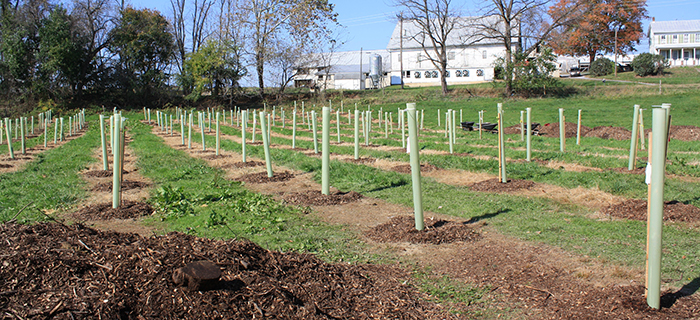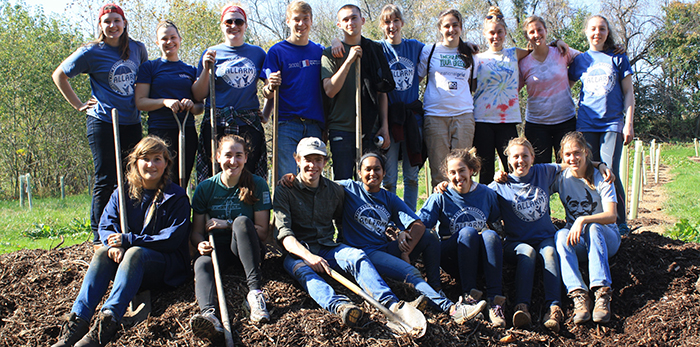Stream Restoration

Starting in 2012, ALLARM Stream Restoration Coordinators, in collaboration with the Dickinson College Farm, began researching and developing protocols for the stream restoration project. Known as a riparian buffer, or protective area of vegetation next to a body of water, this project was built along the Yellow Breeches Stream near the Dickinson College Farm. Riparian buffers are valuable tools for ensuring good stream quality and have multiple functions: to stabilize stream banks, provide shade and mitigate the negative effects of nutrient and pollutant stormwater runoff. This project has made the site an accessible educational area for both the College and the greater Carlisle communities, while converting an animal pasture into a buffer to protect the stream against pollution and runoff. Learn about the trees of the buffer.
Phase One
Completed Fall 2013 - Phase One will stabilize the stream bank with trees and shrubs native to the area with large root systems to filter surface runoff and remove nutrients in groundwater, reducing the impacts of flooding and acting as a natural floodplain. The site was first prepared through the removal of invasive vegetation over the summer with the help of over 40 volunteers. In the fall, Stream Restoration Coordinators and volunteers planted the native trees in the buffer zone.
Phase Two
Completed Fall 2014 - Around 30 volunteers worked with Watershed Coordinators to plant and mulch 185 trees in this zone. Similar to Phase One, Phase Two trees are native with large root systems to protect against flooding, however native fruit bearing trees were also selected for this zone. A 30 by 30 foot area was left cleared in this zone to be used as an educational for visitors to interact with and learn about the stream restoration project.
Phase Three
Completed Spring 2015 - 150 native trees and shrubs were planted and mulched with the help of volunteers and Watershed Coordinators. Major goals included using vegetation to alter the flow of stormwater runoff, reduce erosion, filter out sediments and chemicals and allow runoff to seep into the ground further from to the stream. Maintenance is to be done as years follow - growth is being monitored, and trees that have been planted are re-stabilized and mulched as needed.
